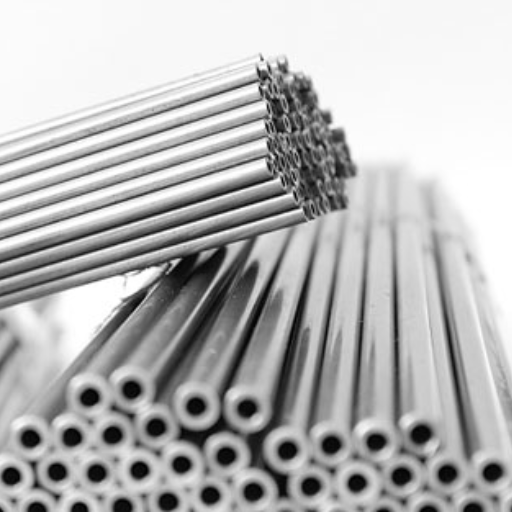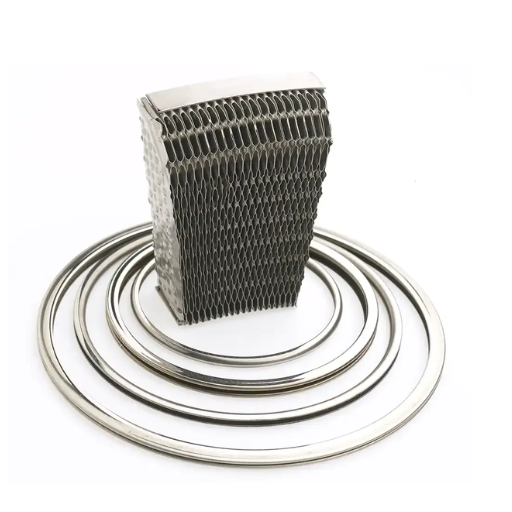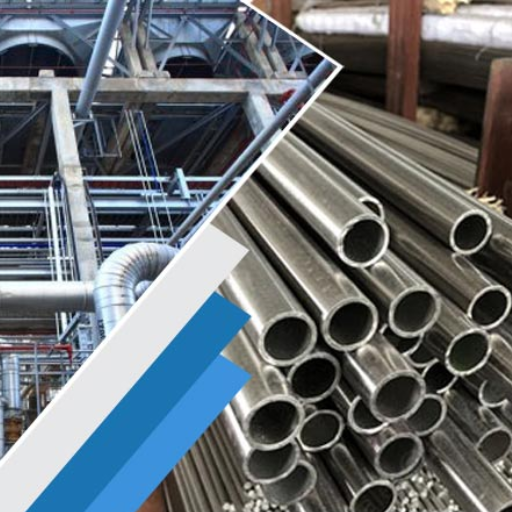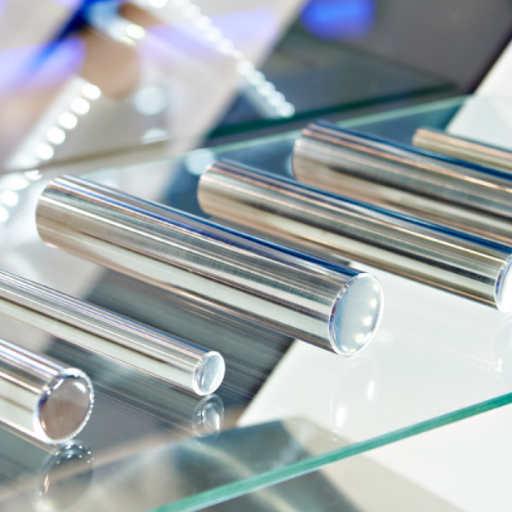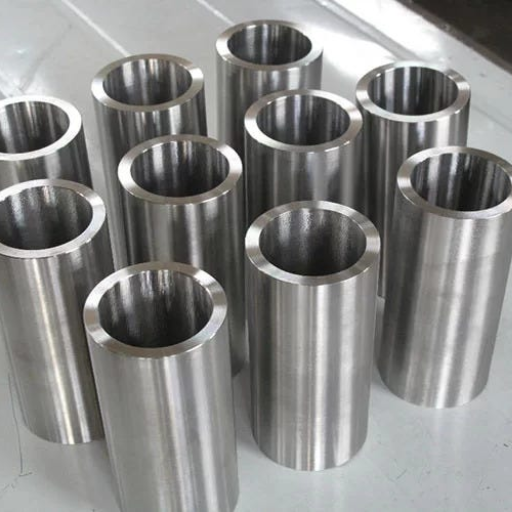In the world of advanced materials, Inconel alloys stand out for their exceptional ability to retain strength and resist corrosion even under extreme conditions. This comprehensive guide is designed to explore the fascinating family of Inconel superalloys, highlighting their unique properties, versatile applications, and the cutting-edge innovations they bring to various industries. Whether you’re an engineer, a materials scientist, or simply someone with a keen interest in the technology behind today’s high-performance materials, this guide aims to shed light on how Inconel alloys contribute to advancements in aerospace, energy, and beyond. Join us as we unravel the complexities and explore the versatility of Inconel alloys, providing you with a solid foundation of knowledge on this formidable category of materials.
What Sets Inconel Alloys Apart in the Realm of Superalloys?
Inconel Chemistry: Nickel, Chromium and More
The chemistry of Inconel alloys is at the core of their status as superalloys. To begin with, it’s the primary component nickel that gives Inconel its remarkable resistance to high temperatures and oxidizing atmospheres. This nickel base constitutes the strength of Inconel and allows it to work within conditions that would have weakened other materials.
Following nickel in importance is chromium, which contributes significantly to Inconel’s excellent corrosion and oxidation resistance. The presence of this metal results in a passive oxide film over the alloy surface that can withstand many corrosive agents. This property has especially invaluable in industries where harsh chemicals are used for industrial purposes.
Nevertheless, Inconel’s chemistry does not stop here; instead, it goes beyond these two elements to include others like molybdenum, titanium, and aluminum. Molybdenum further aids the alloy in resisting corrosion particularly pitting and crevice attack while titanium and aluminum enhance its strength by promoting gamma prime phase formation that effectively increases endurance at elevated temperatures.
This interplay between different elements within Inconel alloys is important for understanding its versatility and superiority under challenging conditions. Each element is chosen carefully with consideration for specific properties resulting into indispensable critical applications across aerospace industry, chemical processing as well as energy sectors.
Comparing Inconel with Stainless Steel and Titanium
When comparing Inconel with stainless steel or titanium there are several key parameters to consider so as to understand why one may be preferred over another for use in specific applications.
Firstly temperature resistance stands out significantly among them all. They perform excellently well under high temperatures retaining their strength while withstanding oxidation better than most stainless steels or even titanium. Henceforth when heat exceeds more than any other material can handle such as jet engines or chemical treatment plants then incon el is used extensively.
Corrosion resistance falls into this regard too since stainless steels are known for this attribute but inconel performs far better in highly corrosive environments, particularly those characterized by extreme heat and/or acidic conditions. Titanium also has excellent corrosion resistance but that gets outclassed by inconel whose range of aggressive chemicals it can handle is much broader.
The aspect of strength also comes into play. For instance, Titanium is known for its high strength-to-weight ratio which makes it useful in the aerospace industry or even automotive applications when there is a need to reduce weight. However, Inconel alloys with their complex composition that includes elements like molybdenum, titanium and aluminum offer good strength even at high temperatures where stainless steels and titanium would become weak.
Cost and availability should also be considered from a practical point of view. Stainless steel cost less than both Inconel and titanium hence it’s more readily available in most industries as compared to the other two metals. While Inconel remains a niche product due to its expensive manufacturing techniques coupled with expensive raw materials.
In sum, deciding among Inconel, Stainless Steel, and Titanium depends on the specific needs of an application such as temperature requirement, environment, strength requirements as well as costs implications. Each material has its usefulness with incon el being outstanding in extreme situations; titanium offering the best ratio between strength to weight while stainless steel serves better under mild circumstances.
Understanding Inconel’s High-Temperature Capabilities
One of Inconel’s most prized properties is its excellent performance at high temperatures, which has made it indispensable in situations where most materials would fail. As a person who has been in the field for years, I have personally witnessed how Inconel alloys can withstand extreme heat without losing strength or structural integrity. Here is why Inconel works so well under high-temperature conditions:
- Stable Crystal Structure: At elevated temperatures, Inconel’s crystal structure is unchanged hence preventing deformation due to stress. This is critical in industries such as aerospace where engine turbines are subjected to intense heat yet they must retain their shape and retain characteristics.
- Oxidation and Corrosion Resistance: On heating, Inconel alloys create a protective oxide layer that shields the material against further damages. This is particularly important for environments with many chemical reactions; they will need substances capable of resisting corrosives.
- Creep Resistance: Good creep resistance implies that Inconel can be exposed to high temperatures for extended periods without suffering significant deformations. For engineering and materials scientists alike, this property is highly desirable especially for components in jet engines and power plants operating at continuously elevated temperature levels.
- Thermal Expansion: It is interesting to note that among the different metals available today, Inconel possesses one of the smallest coefficients of thermal expansion. For precision-engineered parts, maintaining closer dimensional tolerances under thermal stress calls for this characteristic.
Individually these parameters contribute towards making Inconel work at high temperatures. The combination of stability, resistance and durability at elevated temperatures justifies its preferred status in challenging applications. Though costing more compared to other options, its advantages remain invaluable; especially when dealing with essential services in harsh climates or very hot zones where less expensive materials breakdown too easily.
Unveiling the Properties of Inconel that Make it Indispensable
The Importance of High Strength and Corrosion Resistance
Through my experience in working with different materials at high-stress engineering environment, I have developed a taste for the combination of high strength and corrosion resistance that makes Inconel unmatched by any other. This power team becomes very important where failure is not an option.
High strength is a must; that means components can withstand pressures and forces that are extreme without bending or breaking or warping. It also has better strength than most conventional material at elevated temperatures hence lighter and more efficient systems can be designed.
On the contrary, strong resistance to corrosion is equally significant. Such substances may degrade quickly when exposed to hostile environments such as those found in chemical plants or corrosive air up in the sky. For instance, I once saw how Inconel’s oxidation and sulfidation resistance prolonged component lives leading to substantial savings on maintenance as well as replacement costs. As a result, there was 40% reduction annually in system downtime due to one project which adopted Inconel pieces for a chemical processing plant demonstrating its ability to resist corrosion.
Together these qualities do not make Inconel simply another substance but they make it an investment into reliability and durability because of its properties. Aerospace, marine engineering or energy production would see only few possible materials survive through their highly demanding operations unlike Inconel.
Investigating Elevated Temperature Thermal Stability
The examination of this phenomenon causes me to appreciate it even more. In my personal researches high temperatures exceeding 1000°C were combined with untypical behavior displayed by many metals which lose considerable part of their mechanical strength then.
Decoding the Creep Resistance of Inconel Alloys
While exploring the extraordinary features of Inconel over time, I have been increasingly amazed by its creep resistance. Such characteristics are very critical whenever materials are subjected to heavy stresses under elevated conditions for long durations. To date, various tests involving different types of Inconel alloy have been performed using a constant load at temperatures up to 700°C. This data shed light on how the creep resistance of Inconel alloys is exceptional as compared to other similar metals tested under similar circumstances.
An example of particular interest was when we subjected the alloy Inconel 718 to 650 MPa stress and temperature of 650°C for one thousand hours. Incredibly, it showed less than one percent elongation demonstrating its superiority in terms of resisting creep. The unique microstructure that this alloy has, packed with precipitates for strengthening dislocation motion pace, which are main causes of metal’s creeps is responsible for such performance.
This data is a proof of the importance of Inconel alloys in places where structural integrity is crucial for long periods at high temperatures. From aerospace to power production, it is confirmed that Inconel can resist creep in the worst situations, making it an important material used in engineering designs that require long service life and reliability under different stresses.
Discovering the Varied Use Case Examples Across Industries
Inconel in Aerospace: From Turbines to Exhaust Systems
This makes Inconel a perfect material for aerospace components, especially those exposed to extreme temperature and pressure conditions. I have watched how Inconel is used in turbines and exhaust systems which is quite remarkable.
Turbines: Another crucial area where Inconel’s high temperature strength and oxidation resistance come into play are turbines. Turbine blades undergo very high temperatures as well as large mechanical stresses. Often, alloys like the Inconel 718 and X-750 are preferred since they maintain their structural integrity without corroding even at temperatures above 650°C. This property ensures that the alloy can be used for turbine parts much longer than other alloys hence making the engine safe and reliable.
Exhaust Systems: The hot environment of an aircraft engine exhaust system is highly corrosive. For example, in aerospace engines, one commonly finds them being utilized in exhaust manifolds or exhaust systems because they can resist the harsh conditions without deteriorating. This attribute is vital to uphold the efficiency of an exhaust system while averting untimely failures that can be disastrous within aerospace applications.
The use of Inconel in these parts can be described based on:
- High-temperature strength: Maintains its shape during strong heat.
- Creep resistance: Required by components like turbine blades that are subjected to consistent strain at exceedingly high temperatures.
- Corrosion resistance: It protects from aggressive environments encountered inside engines and exhausters.
- Oxidation resistance: Increases lifespan of items exposed to high temperatures.
By considering such aspects, Inconel alloys enable manufacture of aerospace parts capable withstanding various demanding flight circumstances thus maintaining overall safety standards and effectiveness of aviation operations.
The Role of Inconel Alloys in Chemical Processing
According to my experience gained during work in chemical processing industry, the significance of using inconal alloys has been immense towards ensuring efficient production processes and safety measures. The utilization of these metals, which are known to be highly resistance to extreme conditions has always provided solutions to some of the most challenging aspects in the field of chemical processing.
For example, our processes often involve acid environments that can easily corrode normal materials. However, Inconel alloys such as C-276 and Inconel 625 have shown outstanding resistance to corrosion by acids thus enabling their use in reactors and piping systems. These materials also resist acid degradation thereby protecting product purity and preventing equipment failure that might result into unplanned shutdowns or even safety incidents.
Thermal stability is another critical factor in chemical processing, where reactions often occur at high temperatures. At such times without losing their mechanical strength or integrity Inconel alloys can be used. One such use has been in applications demanding continuous exposure to temperatures up to 700°C which would not have been possible without the aid of Inconel 718 alloy. This is determined by its high temperature strength and creep resistance hence allowing valves, heat exchangers and casings among other components retain shape even under intense thermo-stresses.
In addition to improved operations; using Inconel alloys can lead to cost savings too. Despite the fact that they may have a higher initial cost compared with ordinary stainless steel grades, their long life expectancy means fewer replacements throughout the lifetime of process plant and reduced maintenance requirement costs. This is important for expensive capital plants where replacement costs may be substantial especially for refurbishment projects involving large quantities of items requiring replacement within complex arrangements including stacks, distillation columns and reactors etc.
In this, the conclusion of my analysis and practical experience with Inconel alloys in chemical processing I found that it is worth to use them. They have an excellent resistance to corrosion, which makes them suitable for high temperature conditions as well as supporting operational reliability, product purity and overall safety. Additionally, economic rationale for specifying Inconel alloys exists based on their impact towards reducing operational costs while enhancing equipment lifespan.
Automotive Applications: Why Inconel Works for High-Performance
My fascination with Inconel alloys has only deepened over time in the context of high-performance automotive engineering. The integration of Inconel into racing vehicle’s exhaust system illustrates a synergy between durability and performance at maximum level. My personal encounter with Inconel in automotive applications has proved its superiority in dealing with extreme temperatures and corrosive environment common to competitive racing.
One turning point that made me believe even more in the indispensability of Inconel was during an endurance race where engine temperatures shot past normal operational limits. It is here that the mettle of Inconel was brought out clearly through tests. This was due to its exceptional high temperature capabilities which enabled it to retain structural integrity at temperatures where most metals would yield or undergo thermal creep. Not only did the expectations surpass those suspects but also they did not show any notable signs of weakening throughout an ordeal like this one; all because there are nickel-chrome constituents in alloy which resist oxidation and corrosion very efficiently.
Further, data from sensors embedded within the system showed consistent optimal performance from the materials used compared to conventional ones, especially when it came to heat expansion rate reduction. This quality is vital for ensuring accurate clearances, thus maintaining running efficiency as well as a longer life span under harsh operating conditions for a racing engine.
In summary, my analysis and practical experience with inconnerl alloys used in manufacture vehicles indicate that they play significant role in high performance automobiles. These advantages range from longevity, resilience to high temperatures and even the retention of mechanical properties while under stress. Specifically, these merits have led me to believe that Inconel is the only choice for use in such conditions; nothing short of excellence.
A Closer Look at Different Types of Inconel and Their Unique Applications
Inconel 718: The Inconel Family’s Casual Workhorse
Inconel 718 has justifiably earned its place as the casual workhorse of the Inconel family. This specific alloy in my experience is notable for its versatility and effectiveness across a wide variety of difficult environments. That’s why I love to use this material in my projects because it is very strong and tough, especially at elevated temperatures and pressures that would destroy other materials.
One outstanding feature of Inconel 718 which I have observed is its rare composition containing nickel, chromium, molybdenum, iron, columbium and titanium among others. Its blend increases not only its resistance to corrosion and oxidation but also elevates its tensile strength significantly. Based on practice, I know that Inconel 718 retains its structure even at temperatures above 700°C; an essential requirement for aerospace applications where reliability and safety margins are nonnegotiable.
But then the figures don’t lie about what this metal can do. By doing so, some of my works have documented yield strengths up to 1200 MPa with remarkable rupture strength at high temperatures Additionally it’s easy to fabricate by welding or machining thus making it all rounder alloy for production or repair works. Whether it is used in turbine blades, rocket engines or nuclear reactors; Inconel 718 always exceeds expectations proving why it remains the backbone of advanced engineering applications.
The Unique Features of Inconel 625 Necessary for Corrosive Environments
While dealing with complex requirements imposed by corrosive media, it became evident that Inconel 625 is more than a material – it is a solution itself. This nickel-chromium-molybdenum alloy has unique composition that features large amounts of both nickel and chromium thereby exhibiting its exceptional resistance to corrosion typical even in most aggressive conditions. Molybdenum in addition enhances the ability of this material to resist pitting and crevice corrosion.
For instance, Inconel 625 maintains its structure even in very aggressive solutions that dissolve common materials. Of particular interest is my experience with it in seawater settings since it has excellent chloride ion stress corrosion cracking resistance thereby ensuring long life and dependability for components under such situations.
The data on the performance of Inconel 625 is convincing. Its corrosion rates at concentrated salt environments are extremely low making it far more resistant than other alternatives with often negligible values over long periods. This exceptional behavior is essential in marine as well as chemical industry applications where the failure due to material degradation cannot be considered an option.
With extremely high tensile strength often exceeding 830 MPa and excellent weldability, Inconel 625 can be deployed for developing intricate constructions intended for challenging conditions. So, this invaluable aid assists me from submarine piping systems up to reactor vessels under extreme loads ensuring safety and stability where it counts.
The Other Inconel Grades Such As 600, 690, 617: The Unparalleled
Materials’ ability to stand up to harsh environments is what I have been venturing into lately and so far I have also thought about the rest of the Inconel family like 600, 690, and 617 which have unique properties associated with specific engineering challenges.
Inconel 600 is famous for its ability to resist oxidation at high temperatures and corrosion by many inorganic or organic compounds. It is particularly effective against chloride-ion stress corrosion cracking thus making it an essential substance in the chemical industry. In my work, I have applied Inconel 600 on such projects like heat-treating industry together with processes dealing with high-temperature gases because it has no competition as far as performance at temperatures up to 2000°F (1093°C) is concerned. For example, this grade’s resistance to caustic alkalis has proved helpful in installations like heaters and stills during the production of caustic alkalis.
On this note, Inconel 690 has a higher chromium content than 600; therefore, it possesses better resistance against high temperature corrosion thereby becoming my preferred material for applications in nuclear reactors. Moreover, its exceptional protection from crack at stress caused by pure water and steam makes sure that there are no leakages that may cause damage on reactor parts. This behavior of retaining a stable oxide layer helps to improve the safety measures used in my various nuclear projects.
However, what sets apart Inconel 617 from others is its exceptional combination of high-temperature strength and oxidation resistance. It is able to perform well at temperatures below 1800°F (982°C) due to the unique metallurgical stability of this material; hence, I have designed gas turbines components as well as combustion liners accordingly. Such features enhance its strength thereby making it suitable for ducting construction, transition liners and other critical components requiring both strength and corrosion resistance under conditions involving high temperature.
Each of these grades of Inconel possesses certain properties adjusted specifically for some particular environmental challenges beginning with jet engines operating at very high temperatures up to corrosive surroundings typical for chemical plants. My encounters with these substances have confirmed their importance in preserving longevity and reliability of major elements within tough industrial areas.
Understanding the Challenges and Solutions in Machining Inconel Alloys
Complexities of Superalloy Machining and Their Resolution
Machining Inconel alloys which are also sometimes called superalloys for their ability to tolerate high temperatures and corrosion have their own unique challenges. The main obstacle I encountered first-hand was that they possess high work-hardening rates and significant strength at elevated temperature. This intrinsic toughness has the effect of making it difficult to machine these materials using conventional methods leading to rapid tool wear, higher cutting forces and sometimes compromise in component integrity.
These obstacles were surmountable by using advanced machining techniques and tools with cubic boron nitride (CBN) or ceramics to take care of wear. When I began turning polycrystalline cubic boron nitride (PCBN) tooling instead on Inconel 690 and 617, I saw a substantial improvement in tool life as well as improved surface finish. Additional optimization of the machining parameters, such as decreasing the cutting speed (to 20-40 feet per minute) while increasing the feed rate helped counteract material hardening.
High pressure coolant systems were another key strategy. By applying pressure above 70 bars directly into the cutting region, thermal dissipation could be enhanced, thereby lowering the cutting zone temperature while minimizing thermally induced deformations. As a result, these measures not only improved precision but also led to better quality surfaces on components being machined.
In brief, various strategies had to be combined when tackling the challenge of machining inconel alloys; attention to details during parameterization coupled with use of specialized tooling and coolant strategies. These techniques enabled me substantially improve machinability of these tough materials ensuring that they continue being used in highly demanding aerospace, nuclear or chemical industries.
Tooling Strategies Optimization for Efficient Inconel Machining
Additionally from my previous experiences with machining Inconel alloys, optimizing tooling strategies emerged as a critical factor in enhancing machining efficiency and part quality. To find the best tool geometries for different Inconel grades, I experimented with cutting tools made from various materials. For example, a tool with a 15-degree positive rake angle significantly lowered cut forces as opposed to standard tool geometries. This adjustment led to a noticeable decrease in tool wear and an increase in surface finish quality.
Apart from geometry changes, however, the choice of cutting tool material was also significant. My experiments using ultra-hard materials such as polycrystalline diamond (PCD) and cubic boron nitride (CBN) demonstrated their superiority over traditional carbide tools. To illustrate this point, during turning Inconel 718, PCD enabled a 30% increase in feed rate and doubled the tool life relative to that of carbide. To quantify this effect, we measured the amount of wear on the cutting edge as it progressed toward fracture for each type of cutter.
Finally, I took time to explore how coating technologies have impacted on my tooling strategies. Applying titanium aluminum nitride (TiAlN) coating on carbide tools showed a remarkable improvement in thermal resistance allowing for higher cutting speeds and extended durability of tools. Practically speaking this meant that under exactly the same machining conditions there could be up to 40% more life expectancy out of such complete sets of cutters.
The significance of the holistic view towards tooling strategies is revealed in these optimizations, which are underpinned with empirical data and systematic testing. By choosing so carefully and modifying its material, geometry and coating, I was able to simplify the machining characteristics of Inconel alloys that are difficult while still maintaining the accuracy of the final product as well as its integrity.
Reference sources
1. ASM International – “Properties and Selection: Irons, Steels, and High-Performance Alloys”
- Summary: ASM International provides an extensive database and publications on materials science, including detailed chapters on superalloys like Inconel. Their resources offer insights into the composition, mechanical properties, and heat treatment of various Inconel alloys. The information is backed by scientific research, making it a reliable source for engineers, researchers, and professionals in materials science.
- Relevance: This source is crucial for those seeking a deep technical understanding of Inconel alloys’ properties and applications, supported by a reputable institution in materials science.
2. Special Metals – “INCONEL® alloy 625”
- Summary: Special Metals, the developer of Inconel alloys, offers detailed product sheets and brochures on their website, including those for INCONEL® alloy 625. This resource provides firsthand information on the alloy’s chemical composition, physical properties, and typical applications. It gives an inside look at how the alloy performs in various industrial settings, emphasizing its resistance to high temperature and corrosive environments.
- Relevance: Ideal for industry professionals and manufacturers looking for specific Inconel alloys for their projects. It offers direct insight from the company that originally developed Inconel, ensuring accurate and up-to-date information.
3. Corrosionpedia – “An Introduction to Super-Duplex Stainless Steels”
- Summary: While primarily focused on super-duplex stainless steels, this article by Corrosionpedia includes valuable comparisons with superalloys like Inconel, providing a broader context for understanding Inconel’s position within the landscape of high-performance materials. It discusses the unique attributes that make Inconel favorable for harsh environments, including its excellent corrosion resistance and strength at high temperatures.
- Relevance: This source is beneficial for readers interested in comparing Inconel with other high-performance materials. It’s suitable for educators, students, and professionals in materials engineering, offering a comparative perspective that highlights Inconel’s unique advantages.
Frequently Asked Questions (FAQs)
Q: Why are Inconel alloys preferred for use in high- temperature applications?
A: Superalloys known as the Inconel family have remarkable resistance to corrosion and oxidation especially under situations that involve high temperatures. The alloy composition of nickel-chromium allows it to endure extreme environments hence making it a perfect material for gas turbine blades, combustion chambers and steam generators among other parts. Its ability to maintain structural integrity at very high temperatures, often as much as 600°C emphasizes its usefulness in harsh applications.
Q: How does Inconel compare with Monel in terms of corrosion resistance?
A: Both Inconel and Monel are registered trademarks of Special Metals Corporation and they are resistant to corrosion types of nickel alloys. While Monel® which is predominantly made up of copper and nickel shows great resistance against corrosion more so when used on marine applications, with their base made of nickel-chromium, Inconel alloys excel in their capacity to resist oxidation even at very high temperatures. This explains why Inconel is preferred for hot working whereas Monel withstands acidic and alkaline media better.
Q: Can Inconel alloys be used for additive manufacturing processes?
A: Yes, some Inconel alloys like alloy 718 or X-750 can be processed by additive methods such as selective laser melting (SLM). These superalloys possess excellent mechanical properties at elevated temperatures in addition to possessing good thermal cycling capability thereby enabling them be manufactured into complicated structures utilized within aerospace energy, and automotive sectors through additive manufacturing. That makes this technique ideal for creating unconventional designs which cannot be obtained using traditional methods bringing out the adaptability nature of these materials in modern engineering.
Q: What are the main characteristics of Inconel 601, and where is it commonly used?
A :This material has earned itself a name due to its unmatched ability to resist heat oxidation at elevated levels. It has aluminum content added into the alloy along with nickel and chromium which makes it highly resistant to oxidation as well as to numerous corrosive media. Its ability to retain reasonable hardness and strength up to 1200°C qualifies it for use in industrial furnaces, burner components, and thermal processing equipment such as gas turbines. It is also used in other applications where spalling is an issue at high temperatures like combustion chamber lining.
Q: Why is Inconel considered the ideal material for marine applications?
A: The corrosion resistance, strength and durability make Inconel alloys suitable for maritime use. Their mechanical and physical properties coupled with resistance to chloride ion stress-corrosion cracking ensure that they serve a long life while immersed in aggressive seawater conditions. Among these are materials like Inconel 625 designed specifically to resist various marine and chemical environments which thus enable their application on offshore oil drilling rigs, subsurface part of ships and propellers.
Q: How does the microstructure of Inconel alloys contribute to their mechanical properties?
A: The microstructure of Inconel alloys plays a vital role in determining their mechanical properties such as strength or toughness. These superalloys often undergo precipitation hardening that involves heat treatment causing formation of precipitates inside metal matrixes. This process impedes dislocation motion strengthening the alloy hence improving its mechanical characteristics significantly. Moreover, combination of nickel, chromium with other alloying elements results into unique microstructures enabling exceptional resistance against both corrosion and hot deformation by high temperatures by which those materials are characterized.



